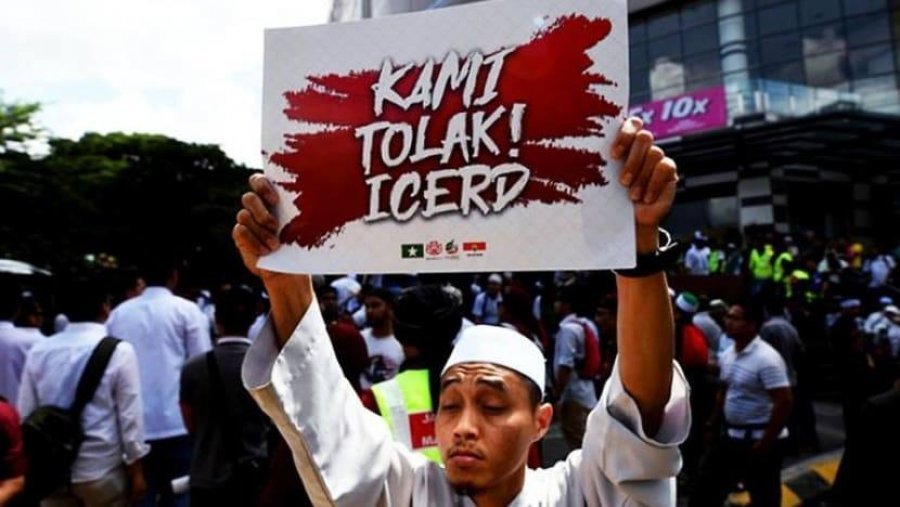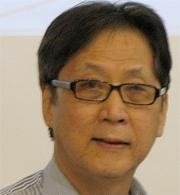过去两周的一系列政治发展,几乎每天都成为新闻头条。这些内容有:柔佛州选举、民兴党西渡半岛和槟城、逮捕反贪会首席专员阿占巴基集会和示威、宣布成立皇家调查委员会──这次是针对朝圣基金局营运弊端,以及法庭对前副首相阿末扎希案的判决。
如果我以个人在whatsapp群组里收到的至少有数十万条信息为指标,反映这些事态发展在社交媒体引起了很多讨论和热议。
在这些事态发展背后都有一个共同的主线,只有少数敏锐的政治观察家能指出或点出其关键。这个被忽略的主线是,这国家似乎正陷入一个更加以单一族群主义为中心(ethnocentrism)的政治发展阶段。
在攸关马来西亚的用词时,通常会使用以下术语来描述国家的政治和文化状况:部分民主或混合体制,非自由民主,半民主,威权国家,衰落国家和失败国家
基于官方的否认和几乎所有社会层面普遍存在的恐惧综合症,以单一族群为中心(ethnocratic)的统治概念很少出现在媒体或公众视野。这是一种政治体制结构的描述(就马来西亚而言,也包括社会经济和文化层面),即国家的机器和机构由单一民族主导和控制,以促进其利益、权力和资源。
批判地理学家奥伦耶夫塔克(Orien Yiftachel )在1990年代提出的以单一族群为中心的政权理论,后来被国际学者进一步的完善,强调了主导的族群,如何在以族群划分的社会中,通过扩大国家控制权力来压制少数群体和解决冲突,并使国家种族化。
依据族群身份分配资源
我们已了解到,单一族群主义政权通常包裹著一层“薄薄”的民主外衣,掩盖著其深刻的单一族群主义结构,在这种结构中,族群身份——而不是公民身份——是获得权力和资源的关键。因此,前面对马来西亚政治状况和文化的六种描述仅提供了国家治理现实的部分画面。
进一步言,单一族群主义国家的概念与马来西亚的相关性如何?这是如何形成的?谁是主导者和影响者?单一族群主义国家的影响是什么?这个概念如何帮助解释政治和社会中正在发生的事情?
根据现有的研究,单一族群主义政权还具有以下特点:
垄断公共领域的关键部门,如警察、军队、司法、土地管理、移民、经济发展等
使用强大的政府机关来维护种族,甚至阶级和个人的利益
利用“微薄”或自由民主的门面,来确保有效控制少数族裔、冲突和危机
除了这些特点之外,马来西亚在单一族群主义国家中,也有其独特的一面。除了马来人在官僚机构、公共与私人领域的领导机构的压倒性控制,加上在选举中偏颇的民主程序外,马来人的主导地位也源于多种来源。这包括国家元首和苏丹的不容置疑地位;马来政党在联邦和州政府中的主导地位(这主要在10个州);长期持有首相、副首相、内政部等内阁关键职位;在国家的权力架构——行政、立法和司法部门的主导地位。
最重要的是,宗教主导因素融入了单一族群主义的国家体制。尽管根据宪法,我国是一个世俗国家,但也有一股力量持续要把马来西亚发展为一个完整的伊斯兰体制国家,以加强单一族群和宗教至高无上的地位。
庞大保守势力
自2018年5月9日改朝换代后,这种以马来人政治和伊斯兰教为主导地位的族群主义统治格局和现实,几乎没有改变。尽管与之前相比,在国会和州议会,非马来人代表人数更多,但非马来人的政治领导人很清楚,任何挑战马来人政治主导地位的限制。他们也意识到,保守的马来势力的反弹,这股保守势力要维护和加强马来人主导地位的现状,并继续和加强伊斯兰为中心的统治模式。
就目前而言,要彻底改革或逐渐改变单一族群主义国家体制似乎言之过早。这不仅可从希盟竞选宣言中的改革承诺,遭到违反和停滞不前清楚反映出来。在这些负面发展中,最关键的也许是马来人普遍反对签署联合国〈消除一切形式种族歧视〉公约。
尽管,联合国于1963年11月20日通过〈消除一切形式种族歧视〉议决约60年后,马来西亚迎来了比国阵更致力于改革的希盟,但希盟执政时依然未能签署有关公约。
显然,马来社会还没有准备好与世界上绝大多数族群一起签署有关公约,这公约不仅拒绝和反对种族歧视,而且谴责任何建立以单一族群主义来划分的国家。
至于未来,可以预见的是,任何要瓦解单一族群主义的举动都会面对著上述多股马来主导力量的抗拒和反对。同样,在国家官僚体制内也存在著庞大的马来势力集团,确保单一族群主义国家体制不受动摇。
林德宜《族群主义崛起》原文:Malaysia’s Resurgent or Stalled Ethnocracy
This last fortnight has provided a string of political developments which have captured the news headlines almost on a daily basis. They have included the following:
1.Announcement of state election in Johor
2.Entry of Warisan in Peninsula and Penang
3.The Tangkap Azam Baki campaign and demonstration
4.Announcement of a new Royal Commission of Inquiry - this time into Tabung Haji
5.Court decision on Zahid case
These developments have generated much discussion and heat with social media comments on them running into at least six digits or more if what I have personally received over my whatsapp is an indicator.
There is a common thread running through these developments which only a few of the more astute political observers have pinpointed or identified.
This missing common thread is that the nation appears to be moving deeper into a more ethnocentric phase of political development.
In the literature on Malaysia, the following terms have generally been used to describe the political condition and culture of the nation
Partly free or hybrid regime
Illiberal democracy
Semi democracy
Authoritarian state
Failing state
Failed state
Ethnocratic State
One term which has not appeared much on the media and public radar because of official disapproval and the pervasive fear syndrome in almost all sectors of society is the concept of the ethnocratic state. This description refers to a type of political (and in the case of Malaysia, socio-economic and cultural as well) structure in which the apparatus and institutions of the state are dominated and controlled by an ethnic group to further its interests, power and resources.
A theory of ethnocratic regimes by critical geographer Orien Yiftachel during the 1990s and later refined by international scholars highlights how an ethnocratic society facilitates the ethnicization of the state by the dominant group through the expansion of control aimed at domination over or conflict with minorities.
It has been noted that ethnocratic regimes typically display a 'thin' democratic facade covering a more profound ethnic structure, in which ethnicity – and not citizenship – is the key to securing power and resources. Hence the earlier six descriptions of Malaysia’s political condition and culture only provides a partial picture of the true reality of the governance of the country.
Malaysia as an Ethnocracy
How relevant is the concept of an ethnocratic state to Malaysia? How has it emerged? Who are the main players and influencers? What is the impact of the ethnocratic state? How does this concept help to explain what is taking place in politics and society?
According to available research ethnocratic regimes are also characterised by the following:
Monopoly of key sectors of the civil service such as the police, armed forces,judiciary, land administration, immigration, economic development,
Use of powerful government instruments to secure not only racial but also class and personal interests
Use of ‘thin’ or liberal democratic facade to ensure effective control over minorities and conflict and crisis
Alongside these characteristics, the case of Malaysia among ethnocentric states is quite unique in several ways. Besides Malay overwhelming control of the bureaucracy and leading institutions in the public and private sectors and the overlay of democratic processes found in elections, Malay dominance stems from a multitude of sources. They include the unassailable position of the Yang di Pertuan Agong and Sultans; the dominance of Malay parties at federal and state levels of government (the latter in ten states); the monopoly of key positions in the cabinet including the Prime Ministership, deputy Prime Ministership and Ministry of Home Affairs; and dominance of the three branches of government - executive, legislative and judiciary.
Lastly but most importantly, the factor of Islamic religious dominance is fused into the ethnocratic state. Although a secular state according to the constitution,there is continuous pressure for the development of a full Islamic state to strengthen both ethnic and religious supremacy in Malaysia.
Since 9 May 2018, little or nothing has changed in this configuration and reality of an ethnocracy and all encompassing Malay political and Islamic religious dominance. Though there are more non-Malay elected representatives compared with the previous Parliament and state assemblies, non-Malay political leaders are well aware of the limits to any challenge against Malay political dominance. They are also cognisant of the backlash from resurgent conservative Malay forces determined to protect and enhance the status quo in Malay dominance and continuation and reinforcement of the ethnocratic Islamic state.
For now the prospect for a decline or reduction in the ethnocratic state appears premature. This is clear not only from the broken and stalled reform promises contained in Pakatan’s election manifesto. Perhaps most important among the negative developments is the widespread Malay opposition to the United Nations Declaration on the Elimination of All Forms of Racial Discrimination.
Adopted as a general assembly resolution on 20 November 1963, almost 60 years later, the Malaysian government, despite being helmed by a Pakatan Rakyat government more committed to reform than the Barisan, failed to ratify the convention.
Clearly the Malay community is not ready to join the great majority of ethnic groups in the world in ratifying the convention which not only rejects and opposes racial discrimination but also condemns any establishment of an ethnocratic state.
As to the future, the writing on the wall is that any dismantling of the ethnocratic state must pass through the resistance and opposition from the multiple sources of Malay dominance identified above. Also at work to ensure the preservation of the ethnocratic state is the less discernible but equally powerful Malay deep state.
要看最快最熱資訊,請來Follow我們 《東方日報》WhatsApp Channel.


















